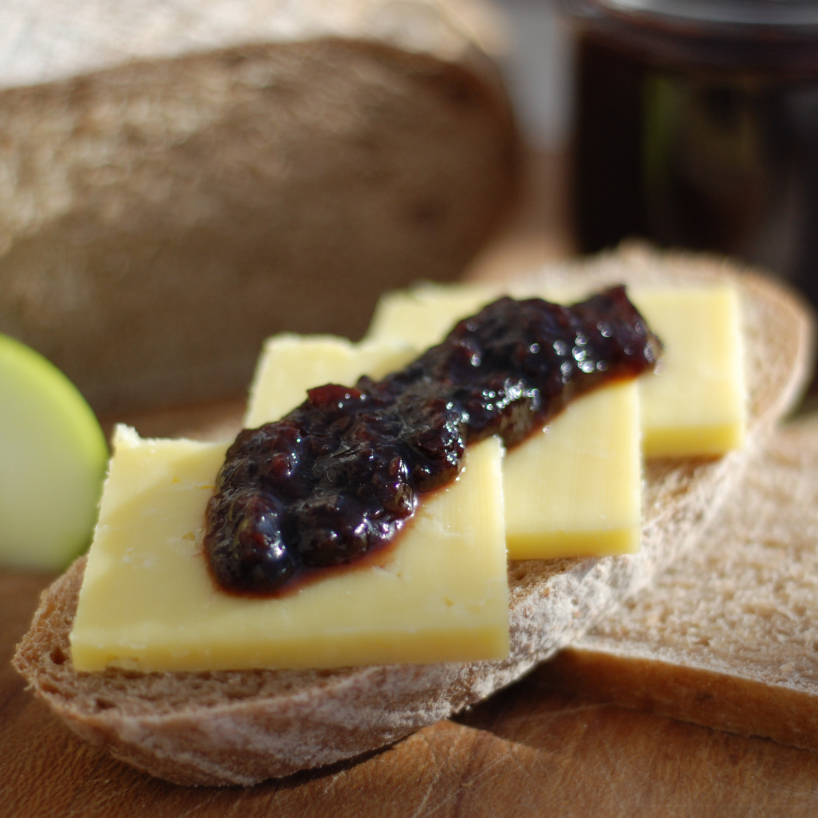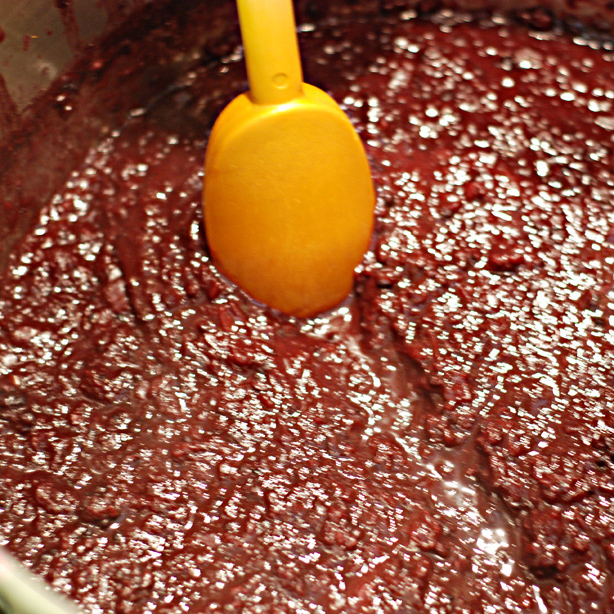Originally from South America, tomatoes were first grown in the UK as ornamental climbers, and cultivated for their decorative leaves and fruit. The Elizabethans thought the fruit was poisonous and the colour a sign of danger. By the 19th century, commercial cultivation of tomatoes became popular with the appearance of glasshouses in Kent and Essex. With thousands of varieties, well known types include; Cherry and Cocktail, Plum and Baby Plum, Beefsteak and Classic. The most popular for use in cooking and preserving as Tomato chutney are Classic and Beefsteak.
 I grow tomatoes to eat and preserve as chutney, sauces and chilli jam. In late summer, my small tomato greenhouse is full of plants with an abundant crop. For preserves, I grow “Ferline F1”. Their ripened flavour and deep red colour are perfect for Red Tomato Chutney and Ripe Tomato Sauce.
I grow tomatoes to eat and preserve as chutney, sauces and chilli jam. In late summer, my small tomato greenhouse is full of plants with an abundant crop. For preserves, I grow “Ferline F1”. Their ripened flavour and deep red colour are perfect for Red Tomato Chutney and Ripe Tomato Sauce.
What is Chutney?
A real chutney needs time to make and time to mature. Gentle cooking of the ingredients softens the fruit and the vegetables and develops the flavour. When cooked, the consistency will be smooth, the colour even and bright. Once matured, any vinegar flavour will have disappeared. Recipes with short cooking times, insufficient vinegar or with cornflour, will produce different products.
Competitions
As a Judge, I have been pleased to see growing numbers of chutneys in competitions. I look for a chutney in a glass jar with a vinegar resistant twist-top lid, and the jar filled to within 5mm from the top. The majority of chutneys should have a rich colour, not muddy. The consistency should be reasonably firm and the texture fairly smooth. No large pieces of onion, fruit skins, cores or stones. No excess liquid or air bubbles. As with all preserves, most marks are awarded for flavour, always a blend of all the ingredients. If the chutney is hot,(spicy) write this on the label to warn the Judge.
 Tomato and Pepper Chutney
Tomato and Pepper Chutney
Makes about 2kg
1.4kg red tomatoes
5 large red or orange peppers
3 red chillies, fresh or dried
450g cooking apples
450g onions
40g salt
50g mixed pickling spice
1.2 litres distilled, white malt vinegar
675g granulated cane sugar
1. Chop the tomatoes. Seed the peppers and chillies, remove all the white pith and finely chop. Peel, core and finely chop the apples. Peel and finely chop the onions. A food processor will blitz these ingredients quickly.
2. Put the tomatoes, peppers, chillies, apples, salt and vinegar in a large un-lidded preserving pan. Tie up the spices in a piece of muslin and add this to the pan. Bring the pan to the boil, turn it down to a gentle simmer. Cook until the contents of the pan are pulpy, stir occasionally.
3.Add the sugar and dissolve it carefully.
Continue to cook gently until the contents of the pan are thick and no “free” liquid remains. Stir frequently to prevent the chutney sticking to the bottom of the pan. Using a plastic or wooden spoon, squeeze the liquid from the muslin bag back into the pan. Remove the muslin bag from the pan.
4. Remove the pan from the heat. Stir and ladle the chutney into a glass or plastic jug. Pour the chutney into clean, warm jars, filling them to within 5mm from the top. As the chutney cools it will shrink another 5mm. Seal the jars with new, vinegar resistant twist top lids. Leave the jars upright and undisturbed until cold. Store in a dry cupboard for two to three months before opening.
If you are keen to grow Tomatoes, here is a great guide from the Royal Horticultural Society.
For more Preserves Recipes First Preserves: Marmalades, Jams, Chutneys or First Preserves: eBooks

